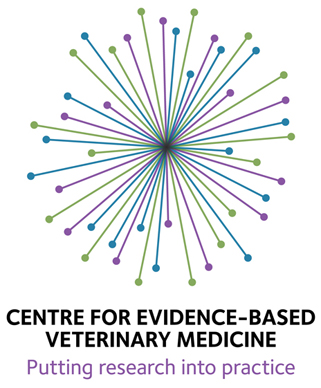Overdiagnosis is now recognized as a common and serious problem in human medicine that causes substantial harm in terms of unnecessary costs, wasted resources, and patient and caregiving suffering. International conferences (e.g. Preventing Overdiagnosis) and special features in major medical journals (e.g. Too Much Medicine in the British Medical Journal and Less is More in the AMA journal) have been dedicated to discussions of overdiagnosis and overtreatment. In 2012, a consortium of 70 specialty groups created the online resource Choosing Wisely to help physicians and patients make evidence-based decisions that reduce overdiagnosis and overtreatment. Even an influential popular book has been written on the subject: Overdiagnosed: Making people sick in the pursuit of health.
Changes in clinical practice guidelines and public education strategies have resulted from the growing recognition of the risk of overdiagnosis in human medicine, including highly publicized changes in recommendations for prostate cancer screening in men and breast cancer screening in women.
However, there seems to be little discussion in the veterinary literature or veterinary curriculum of the problem of overdiagnosis and the risks it poses to veterinary patients. In the past, IK have discussed the evidence regarding potential sources of overdiagnosis in veterinary medicine, such as pre-anesthetic blood testing (also c.f. 1, 2). However, among veterinarians and animal owners, there seems to be a near total lack of awareness of the fact that sometimes testing for and diagnosing a condition can actually lead to a worse outcome for the patient than not diagnosing it.
This is a counterintuitive idea, but it is well-established in human medicine. Changes in guidelines for prostate cancer screening, breast cancer screening, thyroid cancer testing, and many other conditions have come about because of the recognition that inappropriately targeted diagnostic tests can harm patients and waste resources on treatments that do not make people better. It is time we took a serious look at this issue in veterinary medicine, and made an effort to collect the data needed to understand its scope and causes so that we can better serve our patients. Since I was unable to find virtually any discussion of the subject in the veterinary literature, I have written a commentary raising the subject, which I hope will stimulate needed discussions on this topic.
McKenzie, BA. Overdiagnosis. Journal of the American Veterinary Medical Association. 2016:249(8);884-889.










A very useful summary of the situation. I hope it leads to the necessary reseach.
I have refused blood tests before operations on my dogs and also when altering the dose of metacam because I felt they were unlikely to show anything useful and the dog concerned had a bad start (kept in a shed for her first five months) so she is rather nervous and I like to keep treatment to the absolute minimum necessary. In the case of the metacam the dog had previously been on the full dose and was tested for liver damage at that point, the dose was reduced, but she started favouring the arthritic leg so we upped the dose (but not to the full dose), the vet suggested a blood test, but it seemed to me to be unecessary as she hadn’t sustained any damage on a higher dose for an extended period. The vet was quite hapy with this, especially having seen how nervous the dog was – the dog was attempting to hide under a chair while we had the discussion, but not managing it as she’s a GSD.
I just ordered Dr. H. Gilbert Welch new book Over-diagnosed: Making People Sick in the Pursuit of Health, with co-authors Lisa Schwartz and Steven Woloshin. It was only about ten dollars on amazon prime.
Choosing Wisely is a great resource. I belong to Kaiser Permanente which is at the leading edge of medicine. No over-testing, just appropriate testing. Unfortunately because I read so much about health, I mention changes in testing to friends who consider them totally wrong, no ability to realize that new information changes recommendations. This is a great blog. Thank you so much for devoting your limited time to those who follow evidence-based veterinary care.
I got here because the vet put my cat under anesthesia to explore for a foreign object in his leg (which wasn’t found) and then x-rayed the paw. I actually asked before the procedure if there would be an x-ray and she didn’t think that was an appropriate; she said it wouldn’t show if there was a foxtail stuck in his leg which she seemed pretty convinced was the case for whatever reason. Anyway, over $500 later, it appears it was just a cut.
I’m left feeling this ordeal was over the top.
I’m interested in your opinion on overused diagnostic testing which is suddenly now available but wasn’t necessary years ago. Specifically, feline opthalmology, cardiac echos, brain scans, nuclear testing on thyroid prior to treatment, etc. It seems to me that this is just a money making scam. One used to be able to have a pet treated for things without all this. Now vets say they “can’t proceed” without it.
Any test can be unnecessary depending on the context, but there is nothing inherently unnecessary or inappropriate about any of the tests you mention. Cardiac ultrasounds, for example, are critical in effectively diagnosing and managing heart disease, and they can be quite useful in preventing heart disease by allowing early detection and preventing breeding of animals with congenital anomalies. The fact that something costs money or didn’t used to be widely available doesn’t mean it isn’t a useful test under the right circumstances.
We should be thankful for the availability of advanced testing such as CT’s, MRI’s, thyroid, etc etc. Thyroid testing for example: it used to be sort of a one-size-fits-all approach with I131, now with pre-testing/imaging a patient can get a patient-specific dose that may not send them into HYPO-thyroidism after treatment, or unnecessary over-treatment – thus, for many cats, no need for a second treatment, less stay in the clinic, faster recovery.
Likewise, an MRI example – had a friend who saw 2 different primary vets, 2 specialty vets, and the 2nd specialty vet was the only one who could specifically detect a tumor on the spine – with an MRI. Her kitty went undiagnosed for nearly two months because no referral for an MRI was offered until it was too late. (it may not have changed the outcome in this case, but it may in other cases)
Pingback: Liquid Biopsy- An Evidence Update |
Pingback: NuQ Cancer Screening Test- Yes or No? |